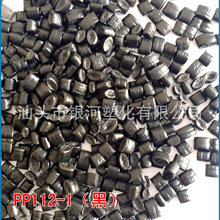Dash of graphene leads to "toughest" solid battery electrolyte to date
A solid-state battery, where the liquid electrolyte that carries the charge is swapped out for a solid alternative, promises a number of performance benefits over today's solutions, but there are a few problems to solve first. Scientists at Brown University are reporting a new design that overcomes some of the key hurdles, using a delicate mix of ceramics and the wonder material graphene to produce the toughest solid electrolyte to date.
As the solution that carries the lithium ions back and forth between the anode and cathode while the battery is charged and discharged, liquid electrolytes play an important role in the function of today’s lithium-ion batteries. But these highly volatile liquids bring a risk of fire when the battery short circuits, so there is room for improvement in terms of safety.
Beyond that, alternative electrolytes could offer greater energy density and even allow for other components of the battery to be upgraded, too. For example, the anode is typically made out of copper and graphite, but scientists believe a solid electrolyte would enable the battery to function with a pure lithium anode, something that could break the “energy-density bottleneck,” according to one recently published study.
But integrating a solid electrolyte isn’t exactly easy, with efforts so far often plagued by fracturing and corrosion of other parts of the battery. Using ceramic materials has shaped as one option, but their brittle nature has also proved problematic. The Brown University researchers believe they can overcome this drawback by adding a dash of graphene, the strong and lightweight wonder material that also offers high electrical conductivity, an attribute that had to be managed carefully for these purposes.
“You want the electrolyte to conduct ions, not electricity,” says study author Nitin Padture. “Graphene is a good electrical conductor, so people may think we’re shooting ourselves in the foot by putting a conductor in our electrolyte. But if we keep the concentration low enough, we can keep the graphene from conducting, and we still get the structural benefit.”
(责任编辑:产品中心)
 Trump won't stop making a deceptive bird claim. Experts debunk it.
Trump won't stop making a deceptive bird claim. Experts debunk it. Revolving door hiring reemerges as controversy at state
Revolving door hiring reemerges as controversy at state Southampton mark new era by thrashing Brentford
Southampton mark new era by thrashing Brentford![[FULL TEXT] Trump's letter to Kim Jong](https://img.koreatimes.co.kr/upload/newsV2/images/KakaoTalk_20180524_230120245740(0).jpg/dims/resize/740/optimize) [FULL TEXT] Trump's letter to Kim Jong
[FULL TEXT] Trump's letter to Kim Jong 雅安市第四人民医院:工娱治疗让患者康复之路充满希望
雅安市第四人民医院:工娱治疗让患者康复之路充满希望
- Best smartphone deal: Google Pixel 8a on sale for $449 at Amazon
- Real Madrid win Spanish Super Cup
- U.S. praises Korea, Japan for reaching breakthrough deal on wartime sexual slavery
- 肇庆赛区15强诞生,晋级决赛!
- Deceased K
- Millie Bobby Brown wants people to know that hair does not equal beauty
- [FULL TEXT] Trump's letter to Kim Jong
- Sheryl Sandberg to U.S. government: Release the Russian ads
-
13 Unbelievable Underwater Wonders in Florida
 A must for any aquatic adventurer is a visit to the City of Mermaids at Weeki Wachee, which offers a
...[详细]
A must for any aquatic adventurer is a visit to the City of Mermaids at Weeki Wachee, which offers a
...[详细]
-
Think you hate selfies? The Russian military might ban them.
 Russian soldiers may soon be saying goodbye to their Snapchats. According to the BBC, the Russian Mi
...[详细]
Russian soldiers may soon be saying goodbye to their Snapchats. According to the BBC, the Russian Mi
...[详细]
-
[INTERVIEW] 'North Korea should show sincerity toward denuclearization'
![[INTERVIEW] 'North Korea should show sincerity toward denuclearization'](https://img.koreatimes.co.kr/upload/newsV2/images/201806/9903766fafeb4e80ac2734a4cdc2223a.jpg/dims/resize/740/optimize) Kyungnam University President and former Unification Minister Park Jae Kyu / Courtesy of Kyungnam Un
...[详细]
Kyungnam University President and former Unification Minister Park Jae Kyu / Courtesy of Kyungnam Un
...[详细]
-
Think you hate selfies? The Russian military might ban them.
 Russian soldiers may soon be saying goodbye to their Snapchats. According to the BBC, the Russian Mi
...[详细]
Russian soldiers may soon be saying goodbye to their Snapchats. According to the BBC, the Russian Mi
...[详细]
-
 Google has announced that Gemini, its AI tool that rivals ChatGPT, now supports AI-generated images
...[详细]
Google has announced that Gemini, its AI tool that rivals ChatGPT, now supports AI-generated images
...[详细]
-
New USFK assistant chief of staff named
 The commanding general of the Army's 1st Cavalry Division at Fort Hood, Texas, was named as assistan
...[详细]
The commanding general of the Army's 1st Cavalry Division at Fort Hood, Texas, was named as assistan
...[详细]
-
Keira Knightley on modern films: 'female characters nearly always get raped'
 Keira Knightley is voicing her concern over the way women are treated in films.In an interview with
...[详细]
Keira Knightley is voicing her concern over the way women are treated in films.In an interview with
...[详细]
-
Zuckerberg wants 1 billion people to use virtual reality
 Facebook CEO Mark Zuckerberg wants 1 billion people to use virtual reality. That's about 13 percent
...[详细]
Facebook CEO Mark Zuckerberg wants 1 billion people to use virtual reality. That's about 13 percent
...[详细]
-
 “至正七年置”青花纪年铭文盖罐1939年,梁思成考察测绘高颐阙 资料图片成都矛石羊上石兽一座古老城市的背后往往是一篇绵延的历史长诗,人类开始学会直立行走,同其他类人猿逐渐划分开伊始,部落、城邦在漫长的
...[详细]
“至正七年置”青花纪年铭文盖罐1939年,梁思成考察测绘高颐阙 资料图片成都矛石羊上石兽一座古老城市的背后往往是一篇绵延的历史长诗,人类开始学会直立行走,同其他类人猿逐渐划分开伊始,部落、城邦在漫长的
...[详细]
-
'Moon, not Trump, deserves Nobel Peace Prize,' says ex
 / Captured from Robert Reich's FacebookBy Kang Aa-young, Park Si-soo Robert Reich, a former U.S. cab
...[详细]
/ Captured from Robert Reich's FacebookBy Kang Aa-young, Park Si-soo Robert Reich, a former U.S. cab
...[详细]
- 24 of the Oldest Trees in the World
- Facebook just acquired tbh and its 5 million teen users
- U.S. praises Korea, Japan for reaching breakthrough deal on wartime sexual slavery
- 第一届大湾区校园防溺水安全教育系列活动即将开启
- Project 2025 Comstock Act: Trump’s new abortion comment exposed.
- Putin invites Kim Jong
- Uber's driver waiting time charges start rolling out to more countries


